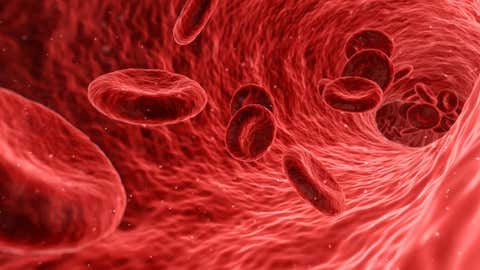Blood
Australian Scientists Engineer Blood Vessels from Natural Tissue

Red blood cells.
(IANS)
In a groundbreaking achievement, a team of Australian scientists has successfully developed a swift, cost-effective, and scalable technique for engineering blood vessels from natural tissue.
By amalgamating various materials and fabrication technologies, the team from the University of Melbourne has devised a method to craft blood vessels with intricate geometries akin to native blood vessels.
Blood vessels play a pivotal role in sustaining life by transporting oxygen-rich blood and essential nutrients to all parts of the body whilst eliminating harmful substances. Conversely, ailments and malfunctions in blood vessels can give rise to life-threatening conditions such as heart attacks, strokes, and aneurysms, establishing cardiovascular disease as the leading global cause of mortality.
Professor Andrea O’Connor, from the Department of Biomedical Engineering, elucidated the research’s significance in advancing scientists’ ability to engineer human blood vessels.
“Our capacity to rapidly and affordably manufacture blood vessels using living tissue possessing suitable mechanical attributes and mirroring the cellular alignment of the innermost blood vessel layer is now within reach.
“Although these engineered blood vessels are not yet suitable for bypass surgery, this discovery represents a noteworthy stride within the realm of tissue engineering,” stated O’Connor in the publication within the ACS Applied Materials and Interfaces journal.
The tissue-engineered blood vessels are crafted from human cells and tissues. These fabricated vessels hold the potential to treat cardiovascular disorders and construct an inherent blood supply for larger tissue formations.
Associate Professor Heath highlighted the worldwide endeavours spanning several years to refine blood vessel tissue engineering.
“Current methods exhibit tardiness, necessitate specialised and costly equipment such as bioreactors, and yield limited throughput—posing challenges in meeting the demand for engineered vessels,” commented Associate Professor Heath.
“Through the amalgamation of diverse materials and fabrication technologies, our approach propels us closer to an era where engineered blood vessels stand as a transformative solution to cardiovascular disease, particularly for patients lacking suitable donor vessels,” he added.
**
The above article has been published from a wire source with minimal modifications to the headline and text.

